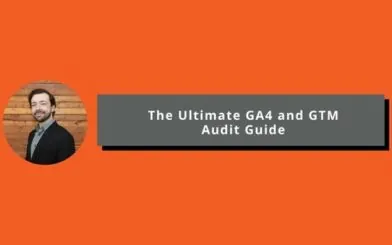This is part two of a series, in which Patrick breaks down insights for Etsy SEO and shares proven action items that can generate results. All the information here is relevant for 2017.
Optimizing an Etsy Store
In our previous blog post, we provided you with a primer on Etsy SEO [Increasing your Etsy store traffic and sales] and why makers and craftspeople around the globe are drawn to this e-commerce platform for selling their wares. Like many, I went through the motions of “if you build it, they will come,” but I learned there are differences between SEO for Google and SEO for Etsy. In this post, we’ll take you down a deeper path, breaking down the individual tactics I employed on my Etsy store (PGwoodgoods) and the outcome.
Feeling the frustration of flat sales, and armed with a lot of knowledge from research, I set out in late March 2015 to take action and made the following changes:
- Added more variety and quantity to my listings. Going from around 20 to 40 listings greatly increased my footprint within Etsy.
- Improved my photography and really focused on the detail in the lead image to help draw the user in (an immeasurably important element of this game).
- Researched and added what I determined to be the best meta keywords possible, ensuring a minimum of 13 per listing.
- Increased the length of my product titles, ensuring the primary focus phrase resided toward the front.
- Honed in my product descriptions, including making sure my primary keyword phrase could be found “above the fold.”
- Created unique title variations of similar product listings to prevent duplicate title issues.
Take a look at what happened to my pageviews after making these changes in March:

What did these SEO changes translate into for my store?
Take a look at the quantity of orders I had come in after my March changes:

When all these elements started jiving, good things started happening. The magic of the Etsy search algorithm began to take hold, and a few specific listings gained popularity in a popular segment. This improved my relevance, and in return spread the relevance to my other listings, thereby increasing the relevance throughout my entire Etsy store.
Etsy Paid Listing Strategies
I activated my internal paid listings around the same time as my other changes in March of 2015. Although my initial daily ad spend was a low $1.50/day, it did generate positive returns. One misconception here is that because my daily spend was set at $1.50/day, I would spend that every day by default. Instead, I would be spending up to $1.50 a day, meaning I will not automatically spend $45 a month on paid listings. Actual daily spend is still very much dependent on the relevancy of your products, search terms, and product type popularity.
Etsy Paid Listing Results
Here’s what I learned: In the nearly 2 years I have been running paid listings in Etsy, keeping with a $1.50/day spend, I’ve been able to gross just over $1,237.00 in sales – just for turning on this feature.
Total Etsy Paid Listing Investment: $507.36 (over two years)
Total Gross Sales from Ads: $1,237.00 or a 143% return on investment.
What’s more important here is that as far as I know, Etsy does not discriminate between paid or non-paid interactions. This means I boosted my revenue generated, thus increasing my relevancy as an Etsy store operator.
Advanced Google Shopping Add On Results
Full disclosure, I’m not even a month into the advanced Google Shopping add on. I started with a similar theory, setting my daily spend to $2 a day. I was getting nowhere near my daily spend. Upon further investigation and consulting with colleagues at BlackTruck, it was discovered that since these are distributed in the Google Network, I needed to now think about this as a traditional PPC or shopping campaign.
Recently, I have increased my maximum daily spend to $10/day. Since I activated the change a month ago and increased the bid spend strategy, I have started to see exponential growth.

I’m trying to spend money, and I can’t. My highest daily spend was $2.10 in the middle of the second month of testing. However, I’ve almost doubled my investment already. Again, all I had to do was activate it. What I have deduced from this is that while the Advanced Google Shopping ads are a nice addition to the Etsy paid listings, you’re also getting distributed amongst a large number of products in traditional Google Shopping campaigns. To that end, I can see where Google is providing their native Shopping campaigns with preference over those being fed in via Etsy.
While there are plenty of free tools out there to help you with your keyword research and SEO on Etsy, some are better than others. Would it be weird if I told you to Google it?
Secondly, like any good SEO will tell you about any platform, Etsy SEO requires consistent upkeep and research just the same. Keyword phrase popularity changes almost as quickly as a store or product’s relevance does. Much like Google, Etsy too makes frequent changes to their algorithm.
My advice is to keep your listing volume steady. From my own research, many in the Etsy selling world say that the sweet spot is between 40 and 60 listings. Your inventory also needs to remain updated and renewed at regular intervals. And for heaven’s sake, make sure your most popular and most relevant listing didn’t “sell out,” when you just didn’t update the inventory online.
If you’re a fellow maker like I am, don’t sit around and wait for things to happen. Try some of my suggestions, take action, and improve your Etsy store.




